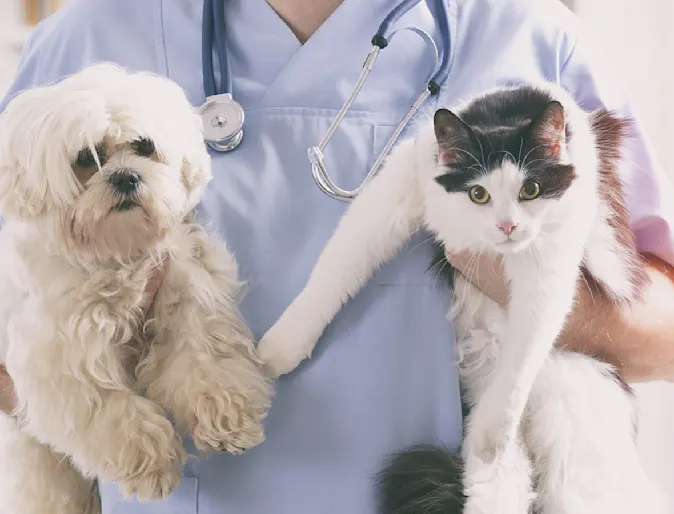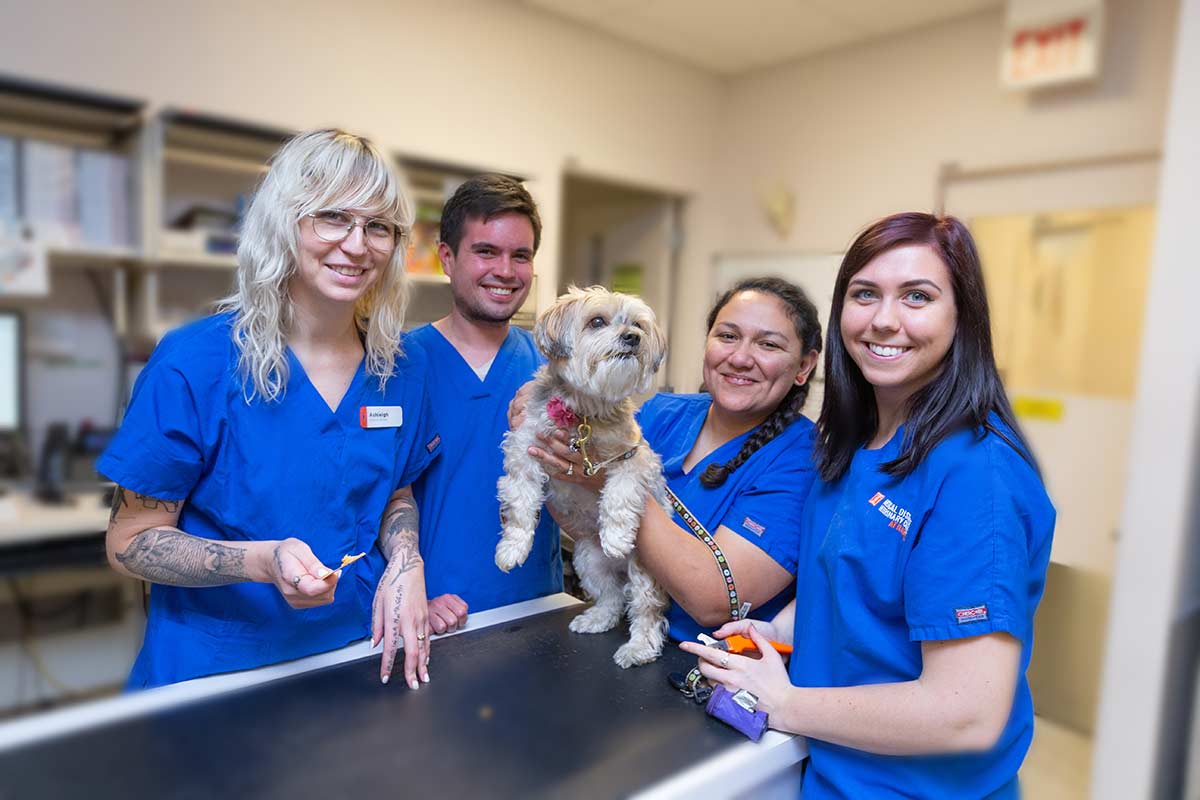Vet Advice on Healing and Care After tplo surgery for dogs
Vet Advice on Healing and Care After tplo surgery for dogs
Blog Article
All Concerning Vet Surgical Procedure: Comprehending the Significance of Expert Take Care Of Your Animals
Veterinary surgical procedure is a vital element of animal medical care. It incorporates different procedures, from routine optional surgeries to immediate interventions. Recognizing the ins and outs of these surgeries can aid animal owners make educated decisions. The prep work, implementation, and healing phases are vital for guaranteeing the health of animals. With appropriate expertise, owners can navigate the intricacies of veterinary care. What variables should be considered before a pet undertakes surgery?
Types of Veterinarian Surgeries
When a pet requires medical intervention, understanding the various types of vet surgeries can help pet dog owners make notified choices. Vet surgeries can be extensively classified into three major kinds: elective, immediate, and emergency situation surgeries. Elective surgical treatments, such as spaying or neutering, are prepared procedures that are not immediately lethal. Urgent surgeries, like those for foreign body elimination, have to be performed soon however are not lethal in the minute. Emergency situation surgeries, such as those dealing with extreme injury or internal bleeding, are crucial and call for immediate attention.Additionally, surgical procedures can vary in complexity, varying from minimally invasive laparoscopic procedures to much more comprehensive open surgical treatments. Each kind of surgical treatment carries its own dangers and recuperation procedures. Understanding these categories enables pet dog proprietors to participate in significant discussions with veterinarians, bring about far better results for their precious pets.
Planning for Your Pet's Surgery
Preparing for a pet's surgery entails a comprehensive checklist to assure all fundamentals are covered. Effective communication with the vet is essential for recognizing the procedure and any needed pre-operative actions - canine tplo surgery. Additionally, having clear post-operative care instructions will certainly aid proprietors offer the most effective support for their recuperating family pets
Pre-Surgery Checklist Essentials
Guaranteeing a smooth surgical experience for a pet needs careful prep work and interest to information. A pre-surgery list is crucial for pet dog proprietors to follow. Validating the set up surgery day and time is vital. Proprietors need to additionally validate that their pet dog has not eaten according to the veterinarian's directions, generally for 8-12 hours before surgical procedure. Gathering essential clinical records, consisting of inoculation history, is essential for the vet's testimonial. It is additionally suggested to prepare a comfy area at home for the animal's healing after surgical procedure. Ultimately, owners must have a plan for transport to and from the veterinary clinic, making certain that the pet dog is safe and comfy throughout the journey. Complying with these steps can considerably boost the surgical experience.
Interacting With Your Veterinarian

Reliable interaction with the veterinarian is crucial for a successful medical experience for pets. Owners must be prepared to review their animal's medical history, including any kind of pre-existing conditions, medicines, and allergies. This info aids the veterinarian evaluate threats and tailor the medical plan as necessary. Additionally, animal proprietors need to ask questions regarding the procedure, anesthesia, and expected outcomes to guarantee they fully comprehend the procedure. Making clear any kind of uncertainties can alleviate stress and anxiety for both the pet dog and the proprietor. It is likewise important to interact any type of behavior adjustments or concerns observed in the animal leading up to the surgical procedure. Eventually, clear dialogue fosters trust and collaboration, guaranteeing that animals receive the very best possible treatment throughout their medical trip.
Post-Operative Care Instructions
After talking about the operation with the vet, family pet proprietors ought to concentrate on post-operative care instructions to help with a smooth recuperation for their pet dogs. These guidelines typically include keeping track of the medical website for signs of infection, such as soreness or discharge. Pet dogs might require to be kept one's cool and restricted to avoid too much activity that might disrupt recovery. Pain management is vital, so proprietors should adhere to the vet's support on administering medicines. Furthermore, dietary constraints might be suggested to avoid intestinal distress. Regular follow-up consultations are essential to assure proper healing and resolve any kind of problems. By sticking to these post-operative care directions, animal owners can considerably add to their pet dog's recuperation and overall wellness.
The Surgical Process Explained
The surgical process for pets incorporates important steps that guarantee their safety and security and healing. Pre-surgery preparations are vital for decreasing risks, while post-operative treatment guidelines play an essential function in promoting healing. Comprehending these components helps pet owners navigate the medical experience extra successfully.
Pre-Surgery Preparations
Before a pet dog undertakes surgical procedure, several crucial preparations must happen to assure a safe and effective treatment. A complete veterinary evaluation is necessary to evaluate the pet's overall health and identify any kind of possible dangers. This may include blood tests, imaging, or other diagnostics. The vet will likewise review anesthesia options tailored to the animal's specific needs. Furthermore, family pet proprietors are usually instructed to hold back food and water for a specified time before surgery to lessen the danger of complications during anesthesia. It is very important for proprietors to give a complete medical background, consisting of any medications or allergic reactions, making sure the medical team has all needed info. Proper communication and adherence to pre-surgery standards can substantially enhance the outcome of the treatment.
Post-Operative Treatment Standards
Proper post-operative care is necessary for ensuring a family pet's recovery following surgery. After the procedure, animals must be checked closely for any kind of indicators of problems, such as extreme bleeding, swelling, or unusual actions. It is necessary to follow the veterinarian's guidelines relating to drugs, consisting of painkiller and prescription antibiotics. Pet dogs must be maintained in a silent, comfortable setting to decrease anxiety and promote healing. Limiting task is important; short, leashed walks may be essential, yet jumping or running should be prevented. Routine follow-up consultations must be scheduled to examine the recovery procedure. In addition, the medical site should be maintained tidy and completely dry, with any signs of infection reported to a vet immediately. Sticking to these guidelines improves recuperation results.
Anesthesia and Pain Administration
Reliable anesthesia and discomfort management are crucial parts of veterinary surgical treatment, making sure that pets continue to be comfy and risk-free throughout the treatment. Veterinarians analyze each pet dog's specific demands, considering variables such as age, weight, health and wellness standing, and the kind of surgery being performed.Anesthesia methods commonly include a mix of pre-anesthetic drugs, induction agents, and inhalant anesthetics, enabling for specific control over the pet's degree of awareness. Tracking throughout surgical procedure is crucial; vets continually go to my site observe crucial indications to resolve any kind of prospective difficulties promptly.Pain administration approaches might include opioids, non-steroidal anti-inflammatory medicines (NSAIDs), and regional anesthetics, customized have a peek at this website to the animal's details circumstance. This complex method assists lessen discomfort and advertises a smoother medical experience. By prioritizing effective anesthesia and discomfort management, veterinary specialists boost the total well-being of pets going through surgeries, guaranteeing they obtain the highest standard of care.
Post-Operative Care and Healing
Complying with surgery, the emphasis shifts to post-operative treatment and recuperation, which is important for making certain a pet dog's safe return to normal tasks. During this duration, family pets call for a quiet, comfy environment to aid healing. Proprietors must very closely monitor their family pets for any kind of signs of pain or uncommon behavior.Veterinary standards usually include details guidelines connected to medication administration, wound treatment, and nutritional modifications. It is vital to abide by these referrals to minimize complications and promote recovery. Animals might need to be restricted from energetic activities, such as running or jumping, throughout their recuperation period (canine tplo surgery).Regular follow-up consultations with the vet enable surveillance of the pet's progress and timely changes to the treatment plan. Providing emotional support and companionship can also enhance an animal's recuperation experience, aiding to ease anxiety and anxiousness. In general, thorough post-operative treatment plays a substantial function in accomplishing an effective recovery
Acknowledging Complications After Surgery
How can family pet owners determine complications after surgical procedure? Understanding of certain signs is necessary for ensuring the wellness of animals throughout recovery. Typical indications consist of too much swelling, soreness, or discharge at cat care hospital the medical site, which might symbolize infection. Furthermore, consistent discomfort, indicated by yawping or unwillingness to move, should motivate instant focus. Adjustments in cravings or water intake can likewise show issues; a decrease in these habits may indicate pain or distress.Moreover, pet proprietors need to check their animals for any unusual behavior, such as sleepiness or difficulty breathing, as these can be indicators of major problems. Throwing up or looseness of the bowels following surgical procedure might require immediate veterinary assessment. Acknowledging these difficulties early can substantially impact a family pet's recuperation process, stressing the relevance of vigilance and timely interaction with a veterinarian for any type of concerning signs.
The Function of Vet Professionals in Surgical Treatment
Vet professionals play an essential function in making sure the security and success of operations for family pets, specifically following surgery when monitoring and treatment are vital. These experts consist of veterinarians, veterinary professionals, and support personnel, all of whom add specialized abilities to the medical process.Before surgery, vets conduct complete examinations to analyze the pet's health, making sure that any type of hidden conditions are handled. During the treatment, the medical team provides anesthetic, preserves clean and sterile atmospheres, and monitors crucial indications, all important for minimizing risks.Post-operative care is just as considerable; veterinary specialists observe for problems, handle pain, and overview owners on healing techniques. Their expertise allows them to recognize early indications of distress or infection, ensuring prompt treatment. Inevitably, the collective initiatives of veterinary professionals in surgical care foster a secure setting, promoting the wellness of pets throughout the medical journey.

Regularly Asked Inquiries
Just how Do I Select the Right Vet Doctor for My Pet dog?
Picking the best veterinary surgeon includes investigating credentials, reviewing testimonials, and evaluating the center's atmosphere. It is vital to review the doctor's experience with specific procedures and their interaction style when deciding.
What Are Usual Misconceptions Regarding Veterinarian Surgeries?
Typical misconceptions about veterinarian surgical treatments include ideas that they are constantly risky, unneeded, or only for emergency situations. Lots of pet dog owners undervalue the advantages of preventative treatments and the ability included in veterinary medical treatment.
Exactly How Much Will My Pet dog's Surgical procedure Expense?
The price of an animal's surgical procedure can differ substantially based upon aspects such as the kind of procedure, the veterinarian's experience, and geographic place (tplo surgery for dogs). Normally, costs vary from a couple of hundred to numerous thousand dollars

Can My Pet Dog Eat Prior To Surgical Treatment?
Prior to surgical treatment, it is generally encouraged that family pets avoid eating for a certain period. This fasting helps in reducing the risk of issues throughout anesthetic. Owners must consult their veterinarian for precise instructions tailored to their pet dog's needs.
What happens if My Animal Has Pre-Existing Health And Wellness Issues?
When a pet has pre-existing wellness conditions, it's crucial for the vet to examine these aspects prior to surgery. This examination assurances ideal precautions are taken, decreasing dangers and optimizing the animal's total safety throughout the treatment.
Report this page